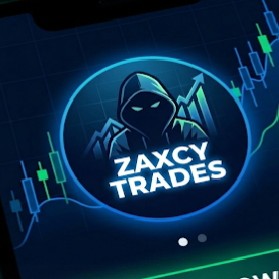
سعر NEAR ProtocolNEAR
NEAR إلى محول AED
معلومات عن سوق NEAR Protocol
سعر NEAR Protocol الحالي اليوم بعملة AED
هل تعتقد أنّ سعر NEAR Protocol سيرتفع أو ينخفض اليوم؟
والآن بعد أن عرفت سعر عملة NEAR Protocol اليوم، إليك ما يمكنك استكشافه أيضًا:
كيفية شراء عملة NEAR Protocol (NEAR)كيفية بيع NEAR Protocol (NEAR)تعريف NEAR Protocol (NEAR)ماذا كان سيحدث لو اشتريت NEAR Protocol (NEAR)؟ما هو توقع سعر NEAR Protocol (NEAR) لهذا العام، 2030، و2050؟أين يمكنني تنزيل بيانات أسعار NEAR Protocol (NEAR) التاريخية؟ما أسعار العملات المشفرة المماثلة اليوم؟هل تريد الحصول على العملات المشفرة على الفور؟
اشترِ العملات المشفرة مباشرةً باستخدام بطاقة ائتمان.تداول مجموعة متنوعة من العملات المشفرة على منصة التداول الفوري للمراجحة.توقعات سعر NEAR Protocol
متى يكون الوقت المناسب لشراء NEAR؟ هل يجب أن أشتري أو أبيع NEAR الآن؟
ماذا سيكون سعر NEAR في 2026؟
في 2026، بناءً على توقعات معدّل النمو السنوي بنسبة +5%، من المتوقع أن يصل سعر NEAR Protocol(NEAR) إلى د.إ6.32؛ وعلى أساس السعر المتوقع لهذا العام، سيصل عائد الاستثمار التراكمي على استثمار NEAR Protocol والاحتفاظ بها حتى نهاية 2026 إلى +5%. لمزيدٍ من التفاصيل، يُرجى الاطلاع على NEAR Protocol توقعات أسعار لعملتي 2025 و2026، لعام 2030-2050.كم سيكون سعر NEAR في عام 2030؟
نبذة حول NEAR Protocol (NEAR)
معلومات حول بروتوكول NEAR
يُعد بروتوكول NEAR عبارة عن منصة لامركزية مصممة لإنشاء وتنفيذ التطبيقات بدون خادم والعقود الذكية. وتأسس البروتوكول في عام 2017 بفضل التعاون بين كلٍ من Alex Skidanov وIllia Polosukhin. ولقد جذبت مناسبات جمع التمويل لبروتوكول NEAR مستثمرين كبار مثل Andreessen Horowitz وFTX Venturs وPantera Capital. وقد تم التشغيل الرسمي في أبريل 2020 بمثابة وصول منصة تهدف إلى سد الفجوة بين التقنيات المعقدة للبلوكتشين والمستخدمين النهائيين. وعلى عكس منصات البلوكتشين التقليدية، تُركز منصة NEAR بشكل كبير على قابلية التوسع وسهولة الاستخدام والاستدامة. كما شكلت هذه الركائز الثلاث فلسفة التصميم الخاصة بها، مما يضمن أنه مع تطور المشهد الرقمي، تظل منصة NEAR قابلة للتكيف ومرنة.
تكمن واحدة من السمات المميزة لبروتوكول NEAR في البيئة التي تُركز على المطور. وإدراكًا للدور المحوري الذي يؤديه المطورون في نظام البلوكتشين، فقد تم تصميم NEAR لتزويدهم بالأدوات التي يحتاجونها، بدون القيود النموذجية التي تظهر في أنظمة البلوكتشين الأخرى. ويسهل هذا التطوير السلس للتطبيقات اللامركزية (dApps)، مما يُعزز تجربة المستخدم في نهاية المطاف.
علاوة على ذلك، يتجاوز التزام بروتوكول NEAR باللامركزية مجرد الجوانب الفنية. وتتبنى المنصة نهجًا يحركه المجتمع، مع التركيز على الشفافية والوصول المفتوح والدافع الجماعي نحو تحسين النظام وتوسيعه. كما تضمن هذه الروح أن نمو منصة NEAR ليس تقنيًا فحسب، بل أيضًا شاملاً، مما يُعزز مجتمعًا مفعم بالحياة من المستخدمين والمطورين والمساهمين.
المصادر
الموقع الرسمي: https://near.org
المستندات الرسمية: https://docs.near.org
NEAR Wiki: https:/ /wiki.near.org
جامعة NEAR: https://www.near.university
آلية عمل بروتوكول NEAR
بروتوكول NEAR هو عبارة عن بلوكتشين لإثبات الحصة (PoS) يدمج مفهوم التجزئة لمعالجة البيانات. ومن خلال دمج كل من إثبات الحصة (POS) والتجزئة، ويمكن لبروتوكول NEAR معالجة تحديين مهمين تواجههما شبكات البلوكتشين التقليدية: كفاءة الطاقة وقابلية التوسع.
تميز آلية إجماع إثبات الحصة (PoS) نفسها عن نماذج إثبات العمل (PoW) كثيفة الاستهلاك للطاقة. وبدلاً من الاعتماد على القوة الحوسبية للتحقق من صحة المعاملات، يستخدم إثبات الحصة (PoS) المدققين الذين يحتفظون بكمية معينة من العملات كعملات مُحتفظ بها. ويتم اختيار هؤلاء المدققين بناءً على كمية العملات التي يمتلكونها وهم على استعداد "للاحتفاظ بها" أو تأمينها كضمان. وهذا يضمن عملية تحقق من المعاملات أكثر كفاءة في استخدام الطاقة وأسرع.
يلعب تميز التجزئة دورًا عندما تفكر في مشكلات الاختناق التي تواجهها سلاسل البلوكتشين الأخرى. وتقسم التجزئة البيانات إلى مقاطع، تُعرف باسم الأجزاء، مما يسمح بمعالجة المعاملات في وقت واحد. ويعالج كل جزء معاملاته وعقوده الذكية بشكل مستقل. ومن خلال القيام بذلك، فإنه يزيد بشكل كبير من الإنتاجية الإجمالية للشبكة، مما يسمح بعملية معالجة أسرع وأكثر كفاءة. وبالتالي، فإن دمج بروتوكول إثبات الحصة (POS) والتجزئة تُمكّن بروتوكول NEAR من تحقيق سرعة استثنائية وقابلية للتطوير.
بالإضافة إلى هذه الميزات الأساسية، خطى بروتوكول NEAR خطوات كبيرة لضمان التفاعل السلس مع شبكة الإيثيريوم، وهي واحدة من أهم منصات البلوكتشين في المجال. ومع الاعتراف بالنظام الواسع والراسخ لشبكة الإيثيريوم، قدمت شبكة NEAR حلين محوريين. الأول هو جسر قوس قزح، الذي يعمل كقناة بين سلسلة NEAR وسلسلة الإيثيريوم، مما يُسهل التحويل السهل للأصول بين السلسلتين. ويضمن هذا أن المستخدمين يمكنهم التنقل بسلاسة بين كلا النظامين دون الحاجة إلى وسطاء خارجيين.
المبادرة الثانية هي Aurora، وهو حل من الطبقة الثانية تم تطويره بالاعتماد على بروتوكول NEAR. وقد تم تصميم حل Aurora ليكون متوافقًا تمامًا مع شبكة الإيثيريوم، مما يسمح للتطبيقات اللامركزية القائمة على شبكة الإيثيريوم (dapps) بالعمل بسلاسة على بروتوكول NEAR. ولا يوفر هذا للتطبيقات اللامركزية بيئة عالية السرعة فحسب، بل يوسع أيضًا قابلية الاستخدام والوصول لبروتوكول NEAR إلى قاعدة مستخدمي الإيثيريوم الكبيرة.
معلومات حول عملة NEAR
تُعد عملة NEAR العملة المشفرة الأصلية لبروتوكول NEAR. ونظرًا لأن الشبكة هي عبارة عن بلوكتشين تعمل بآلية إثبات الحصة، فيجب توفر عملة NEAR لكي يعمل المدقق كعقدة على الشبكة. وتُستخدم لعدة أغراض داخل النظام:
- الاحتفاظ بالعملة والأمان: يحتفظ بعملات NEAR المدققين، الذين يحصلون في المقابل على فرصة للمشاركة في إنتاج الكتل وعمليات الإجماع. تضمن آلية الاحتفاظ بالعملة هذه أمان الشبكة والتشغيل الموثوق.
- رسوم المعاملات: مثل معظم شبكات البلوكتشين، يفرض بروتوكول NEAR رسومًا لمعالجة المعاملات. ويدفع المستخدمون هذه الرسوم باستخدام عملة NEAR.
- نشر العقود الذكية: سيحتاج المطورون الذين ينشرون ويشغلون العقود الذكية على بروتوكول NEAR إلى عملات NEAR لتغطية التكاليف المرتبطة بها.
تأثير بروتوكول NEAR على مجال التمويل
يشهد عالم التمويل تحولًا سريعًا مع ظهور تطبيقات التمويل اللامركزي (DeFi). ويوفر بروتوكول NEAR، بتركيزه على قابلية التوسع وسهولة الاستخدام، أرضًا خصبة لتطوير وتشغيل منصات التمويل اللامركزي. وتضمن بنيتها القابلة للتطوير قدرة التطبيقات المالية على معالجة كميات كبيرة من المعاملات، وهو أمر لا بد منه لأي منصة مالية جادة.
وعلاوة على ذلك، يوفر هيكل الرسوم الفعال لمنصة NEAR بديلاً فعالاً من حيث التكلفة للمطورين والمستخدمين على حد سواء، مما يمثل تحديًا للأنظمة المالية التقليدية من حيث السرعة والاقتصاد.
ما الذي يحدد سعر عملة بروتوكول NEAR؟
لقد أحدث بروتوكول NEAR، وهو لاعب مهم في مجال البلوكتشين ضجة من خلال نهجه المبتكر لتطوير التطبيقات اللامركزية. ويتأثر السعر الحالي لعملة بروتوكول NEAR بعدد لا يحصى من العوامل، بما في ذلك التكنولوجيا الفريدة والنظام المفعم بالحياة الذي يعززها. وباعتبارها سلسلة بلوكتشين من الطبقة الأولى، فإنها تتميز بقابليتها للتطوير وميزاتها سهلة الاستخدام، وهي عوامل محورية في تحديد السعر الحالي لعملة NEAR المشفرة. كما تتأثر القيمة السوقية لعملة NEAR بشكل كبير بالعملة الأصلية، NEAR، والتي تُستخدم لدفع رسوم المعاملات والتخزين على المنصة، مما يُعزز السعر الديناميكي لعملة NEAR اليوم.
يكشف تحليل سعر عملة بروتوكول NEAR أن نظام تجزئة Nightshade الفريد يلعب دورًا مهمًا في تحديد سعر العملة. يسمح هذا النظام للبلوكتشين بالتوسع أفقيًا، مما يعزز سرعات إجراء المعاملات ويقلل التكاليف، وهو عامل مهم في التنبؤ بسعر عملة NEAR المشفرة لعام 2023. علاوة على ذلك، فإن تركيز بروتوكول NEAR على الاستدامة وسهولة الاستخدام يجعله مشروعًا واعدًا في مجال التشفير، مما قد يؤثر على سعر عملة بروتوكول NEAR بشكل إيجابي. ومن المتوقع أيضًا أن يتأثر الرسم البياني الذي يعرض تاريخ تحركات أسعار بروتوكول NEAR بتوافقه مع شبكة الإيثيريوم من خلال حل توسيع Aurora من الطبقة الثانية، الذي يجمع بين قابلية تطوير NEAR مع مدى وصول الإيثيريوم ويقدم منصة مربحة لمطوري التطبيقات اللامركزية.
علاوة على ذلك، يتم دعم تنبؤات سعر عملة بروتوكول NEAR من خلال نظامها القوية. مع الحد الأقصى للعرض البالغ مليار عملة من عملات NEAR والحد السوقي الحالي التي تتجاوز مليار دولار اعتبارًا من سبتمبر 2023، فإن بروتوكول NEAR مهيأ لنمو كبير في السنوات القادمة. وتشير التحديثات المباشرة لسعر بروتوكول NEAR إلى أنه من المتوقع أن تستفيد من جولات جمع التبرعات الأخيرة، والتي عززت مركزها المالي، مما مكنها من التنافس بفعالية مع اللاعبين المعروفين في السوق. يقترب سعر بروتوكول NEAR الحالي بالدولار الأمريكي من 1.12$ دولار أمريكي، مع تكهنات تشير إلى احتمال زيادة القيمة ثلاث مرات خلال العام المقبل، مما يجعله خيارًا استثماريًا جذابًا.
رؤى Bitget



NEAR إلى محول AED
مصادر NEAR
العلامات:
ماذا يمكنك أن تفعل بالعملات المشفرة مثل NEAR Protocol (NEAR)؟
الإيداع بسهولة والسحب بسرعةاشترِ لتنمو، وبع لتربحالتداول الفوري للمراجحةتداول العقود الآجلة للمخاطر العالية والعائد العالياكسب دخلًا ثابتًا بمعدلات فائدة مستقرةتحويل الأصول باستخدام محفظة الويب 3 الخاصة بككيف يُمكنني شراء NEAR Protocol؟
معلومات عن NEAR Protocol وآلية عمل NEAR Protocol
أسعار NEAR Protocol العالمية
شراء المزيد
الأسئلة الشائعة
هل بروتوكول NEAR استثمار جيد؟
ما الذي يحدد قيمة بروتوكول NEAR وسعره؟
ما هي مزايا بروتوكول NEAR؟
هل بروتوكول NEAR هو حل الطبقة الأولى؟
ما هو الفريد في بروتوكول NEAR؟
ما هو بروتوكول NEAR المستخدم؟
ما هو السعر الحالي لبروتوكول NEAR؟
ما هي العوامل التي تؤثر على سعر بروتوكول NEAR؟
هل سيزداد سعر بروتوكول NEAR في المستقبل؟
كيف يمكنني شراء بروتوكول NEAR؟
ما هو توقع السعر لبروتوكول NEAR؟
كيف يقارن سعر بروتوكول NEAR بالعملات المشفرة الأخرى؟
ما هي القيمة السوقية لبروتوكول NEAR؟
هل هناك أحداث قادمة قد تؤثر على سعر بروتوكول NEAR؟
أين يمكنني العثور على بيانات سعر تاريخية لبروتوكول NEAR؟
هل بروتوكول NEAR استثمار جيد الآن؟
ما السعر الحالي لـ NEAR Protocol؟
ما حجم تداول NEAR Protocol على مدار 24 ساعة؟
ما أعلى مستوى على الإطلاق لـ NEAR Protocol؟
هل يمكنني شراء NEAR Protocol على منصة Bitget؟
هل يمكنني تحقيق دخل ثابت من الاستثمار في NEAR Protocol؟
أين يمكنني شراء NEAR Protocol بأقل رسوم؟
أسعار العملات المشفرة ذات الصلة
أسعار العملات المُدرجة حديثًا على Bitget
العروض الترويجية الرائجة
أين يمكنني شراء NEAR Protocol (NEAR)؟
قسم الفيديو - التحقق السريع والتداول السريع!









